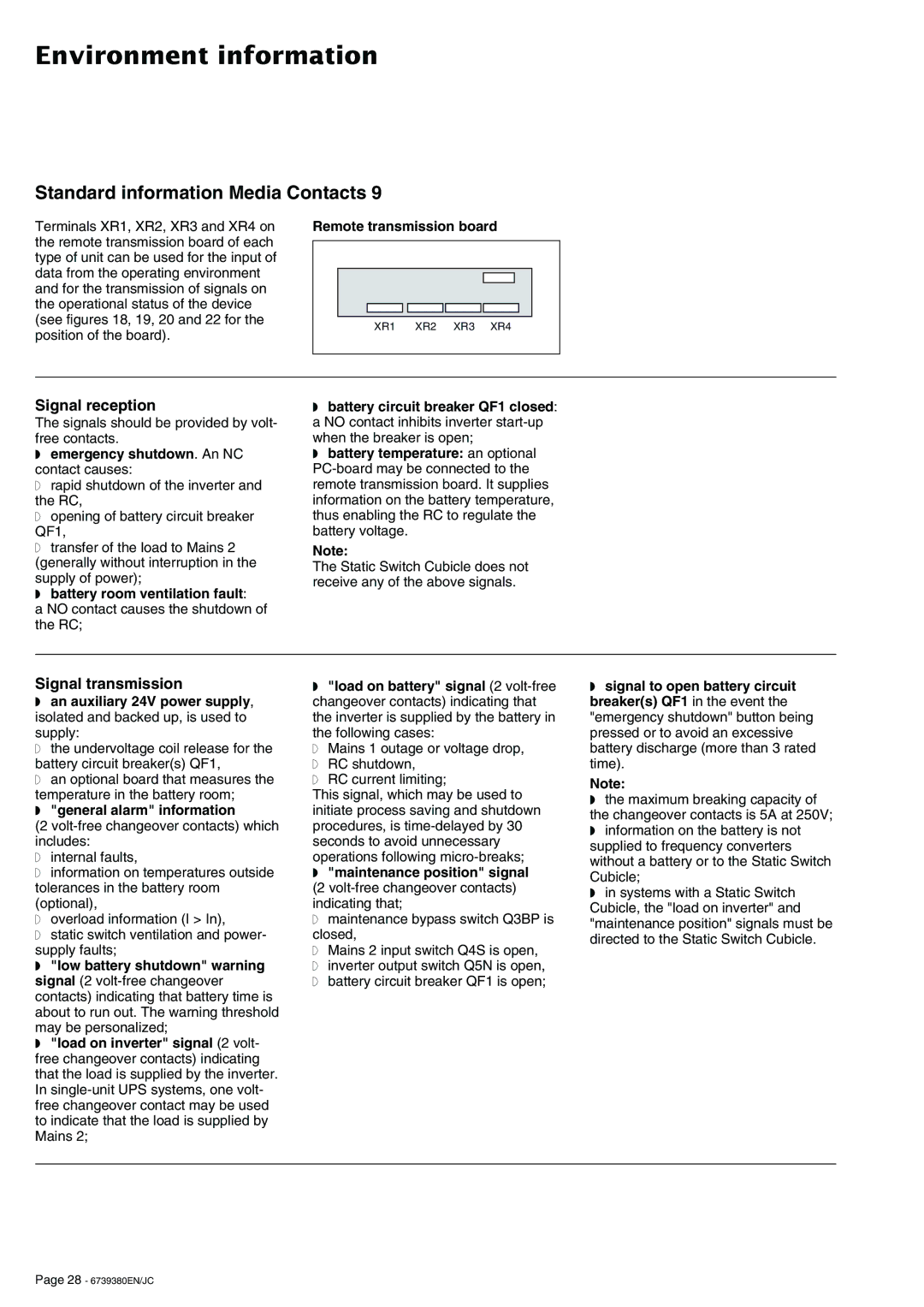
Environment information
Standard information Media Contacts 9
Terminals XR1, XR2, XR3 and XR4 on the remote transmission board of each type of unit can be used for the input of data from the operating environment and for the transmission of signals on the operational status of the device (see figures 18, 19, 20 and 22 for the position of the board).
Remote transmission board
XR1 XR2 XR3 XR4
Signal reception
The signals should be provided by volt- free contacts.
◗emergency shutdown. An NC contact causes:
◗rapid shutdown of the inverter and the RC,
◗opening of battery circuit breaker QF1,
◗transfer of the load to Mains 2 (generally without interruption in the supply of power);
◗battery room ventilation fault:
a NO contact causes the shutdown of the RC;
◗battery circuit breaker QF1 closed: a NO contact inhibits inverter
◗battery temperature: an optional
Note:
The Static Switch Cubicle does not receive any of the above signals.
Signal transmission
◗an auxiliary 24V power supply, isolated and backed up, is used to supply:
◗the undervoltage coil release for the battery circuit breaker(s) QF1,
◗an optional board that measures the temperature in the battery room;
◗"general alarm" information
(2
◗internal faults,
◗information on temperatures outside tolerances in the battery room (optional),
◗overload information (I > In),
◗static switch ventilation and power- supply faults;
◗"low battery shutdown" warning signal (2
◗"load on inverter" signal (2 volt- free changeover contacts) indicating that the load is supplied by the inverter. In
◗"load on battery" signal (2
◗Mains 1 outage or voltage drop,
◗RC shutdown,
◗RC current limiting;
This signal, which may be used to initiate process saving and shutdown procedures, is
◗"maintenance position" signal (2
◗maintenance bypass switch Q3BP is closed,
◗Mains 2 input switch Q4S is open,
◗inverter output switch Q5N is open,
◗battery circuit breaker QF1 is open;
◗signal to open battery circuit breaker(s) QF1 in the event the "emergency shutdown" button being pressed or to avoid an excessive battery discharge (more than 3 rated time).
Note:
◗the maximum breaking capacity of
the changeover contacts is 5A at 250V;
◗information on the battery is not supplied to frequency converters without a battery or to the Static Switch Cubicle;
◗in systems with a Static Switch Cubicle, the "load on inverter" and "maintenance position" signals must be directed to the Static Switch Cubicle.
Page 28 - 6739380EN/JC
